Farm-fresh duck eggs are creamy, and delicious, and are typically more durable than the thinner eggs laid by chicken hens.
Raising ducks for eggs is not any more time-consuming or difficult than raising chickens for the same purpose. In fact, I truly believe it is actually easier to raise ducks for eggs – or even meat.
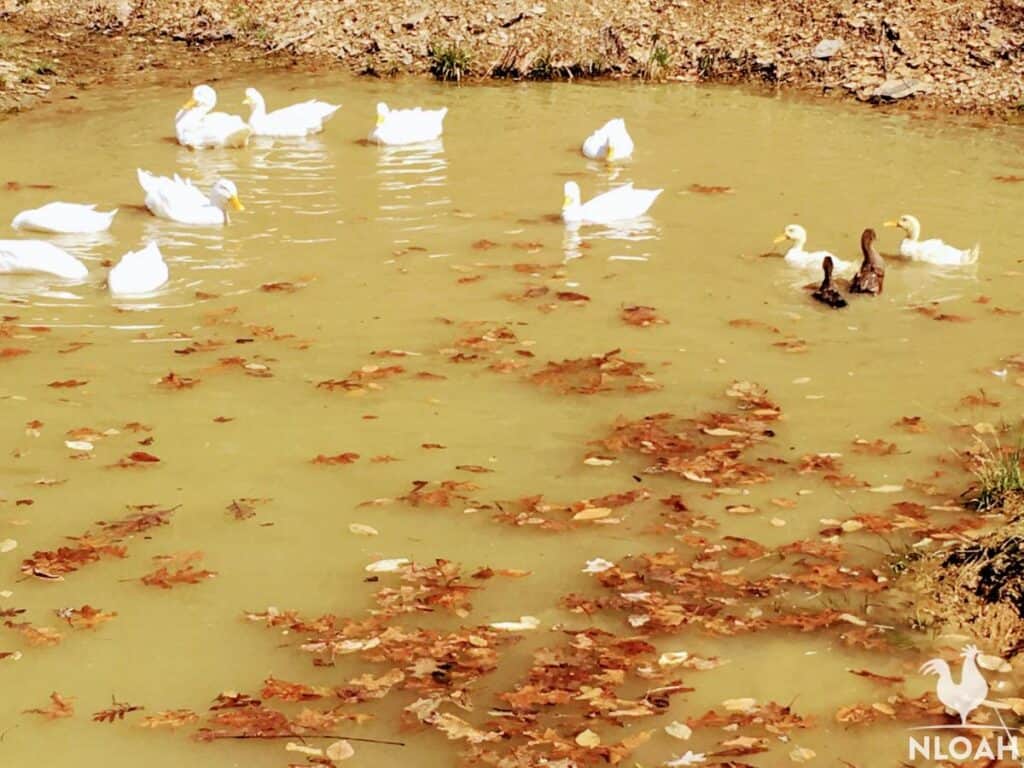
Keeping backyard chickens has become quite popular thanks to so many states and counties enacting “right to farm” rules. But, keeping ducks has largely only been a habitat for us folks lucky enough to live in a rural area… until recently.
Backyard and small acreage homesteaders are learning that ducks can be kept for eggs without the need for a large pond, a separate coop and run from their existing chickens, and sans that panic attack that can occur when being chased and flogged by a rowdy rooster.
If you have kept chickens before, being a newbie duck keeper should be a simple endeavor.
Other than making sure the ducks have a constant clean source of drinking water and a water feature that is regularly cleaned to swim in, the husbandry is nearly identical between the two egg-laying poultry bird breeds.
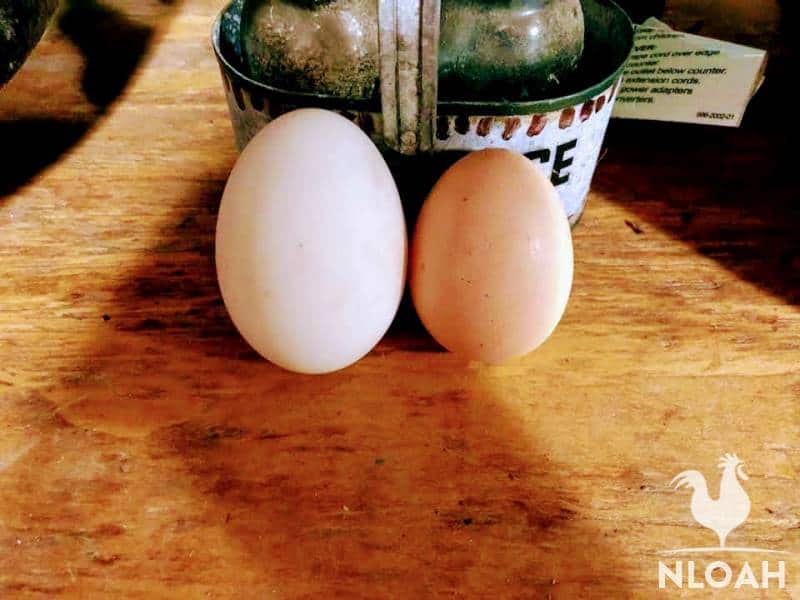
Table of Contents:
Why Keep Ducks, Anyway?
All ducks lay rich and flavorful eggs, but some breeds are far better producers (and sitters) than others. Before you start pondering which duck breed will be best to keep on your homestead, spend a bit of time thinking about exactly why you want to keep ducks in the first place:
Will the ducks be kept solely for egg laying, or will they also be deemed “farm pets”, or used for meat production, as well? Would the ducks be used for a child’s 4-H project? Do you want to breed the ducks to earn extra money?
If you are going to use the ducks beyond solely an egg-laying scenario, finding a single breed that can serve your dual or multi-purpose plans, is a must.
Size matters. If you only have a small space to keep the ducks in, even if they are allowed out to free range for part of the day, bantam-sized to two-pound duck breed is recommended.
The eight to 10 or more pound jumbo duck breeds should be reserved for folks who are definitely going to free-range the flock AND can provide the space for a spacious run area.
If egg production is the only or top reason you plan on keeping ducks, choose a breed that lays at least 225 to 300 eggs on an annual basis.
Many domesticated duck breeds are too large to fly, but not all breeds will remain basically ground-bound year-round.
If the birds are going to be let out of the coop, make sure to choose a breed that either cannot really fly or commit to learning how to clip their wings and do so diligently in the recommended time frame for the breed – or it might be bye-bye ducks on your homestead.
Breed availability is also a factor to consider. The cheapest and easiest way to start a duck flock is by taking advantage of the birds that are available on local farms, through local breeders, or at agricultural supply stores like Tractor Supply and Rural King.
If you want to help boost the dwindling population of heritage breed ducks that have diminished to poor or endangered levels thanks largely to factory farming, a larger price tag and perhaps extensive searching might be required to accomplish this good deed.
If you want to keep ducks to have as natural and healthy of a diet as possible and to provide at least half of their own food without costing you a dime, purchase a breed that is known to be excellent foragers
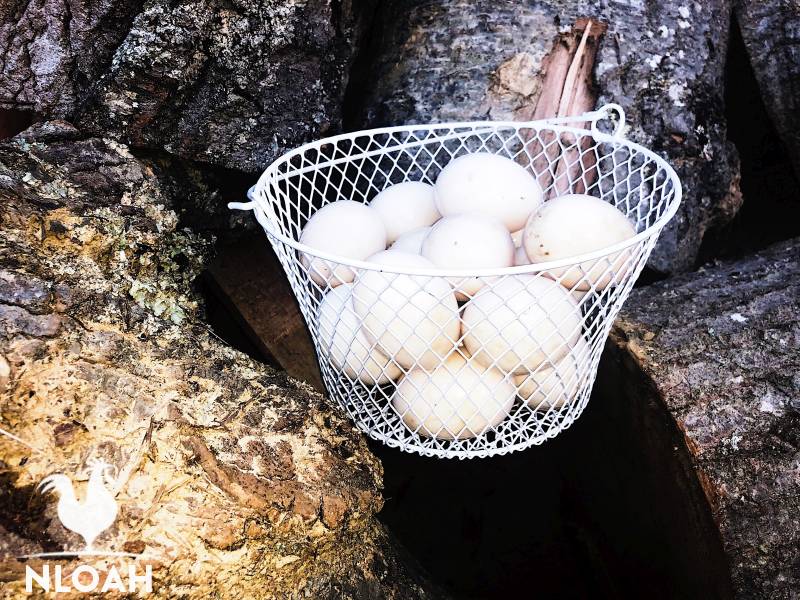
Maintaining flock levels or hatching more ducks than you need in order to earn extra cash from your birds and eggs will require buying a breed that is known to produce nice broody hens.
If you are in love with a breed (or two) that are not known to be good sitters, invest in an incubator so you can still keep reproducing future egg and money makers.
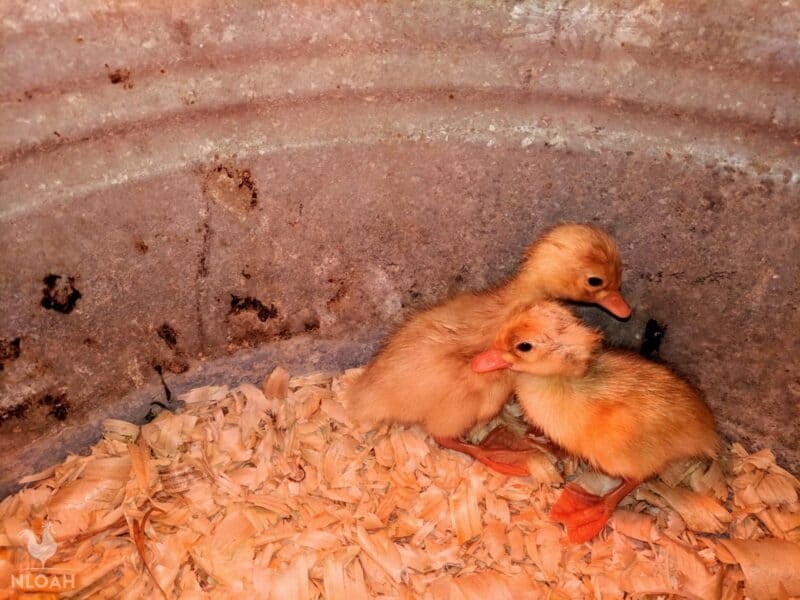
Duck Egg Facts
- The eggs laid by ducks have roughly a 185 calorie count
- Duck eggs have approximately 14 grams of fat.
- The eggs have about 1 gram of carbohydrates.
- The average duck egg weighs around two and a half ounces – or 70 grams.
- Duck eggs have 295% of the daily recommended value of cholesterol.
- A duck egg boasts 21% of the daily recommended amount of iron.
- There is 17% of the daily recommended amount of vitamin D in duck eggs.
Duck Housing
If you are going to keep your ducks on a pond, building a stationary or floating duck house is all you will need if the poultry birds will free range.
A dusk-to-dawn door mechanism that runs on solar power can be used to secure the ducks in the hut at night to protect them from predators, releasing them only once the sun comes up again in the morning.
Such a duck house would need to be large enough to include nesting areas inside so the birds have somewhere to safely place their eggs.
Even though duck eggs are far more thick and more durable than chicken eggs, they will still get crushed under the weight of birds that continuously waddle across them.
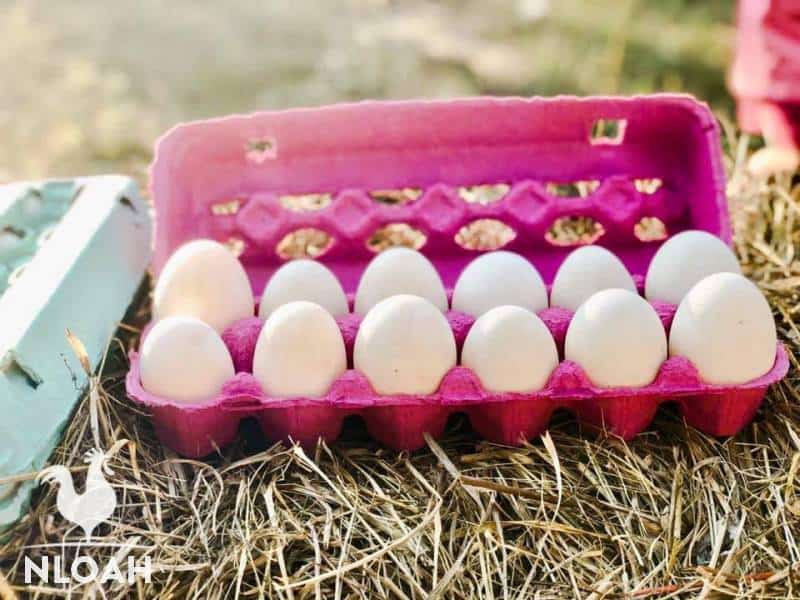
The carton lid will technically close, but the little tabs on the top of the lid will not fit into their designated spot to prevent the lid from popping open.
Keeping your duck eggs in a basket or plastic tub is a far safer option for both short and long-term storage.
Keeping the ducks in a traditional chicken coop and run environment either alone or with a flock of chickens, is another viable housing option. The run will need a water feature of some sort even if the ducks will spend time out of the enclosure free ranging.
A duck (or chicken if you are keeping both types of birds together) that rips a hole in an inflatable pool will not only cause you to waste money on the short-lived purchase, it may also choke on the thin plastic as it clogs its throat.
A plastic baby pool, shallow metal or hard rubber stock tank, or a shovel dug little garden-style pond will suffice. Do not use an inflatable pool, the ducks or chickens will ultimately poke holes in it and cause a significant choking hazard for the birds.
Ducks must have a water source available to them at all times. If you do not have the space, equipment, or funds to dig a large pond for the ducks (and you) to enjoy, keeping these superb egg-laying poultry birds is still possible.

A small shovel-dug garden pond or a kiddie swimming pool will suffice. Do not use an inflatable but a plastic or metal tank or pool. Ducks can tear more apart with their beaks more than you might think.
Feed And Water
Ducks need a lot more water than chickens AND they will try to “swim” in even the most shallow of water dishes.
When keeping ducks it is best to use the type of waterer that has the holding tank part placed on the outside of the coop run fencing and the detachable drinking fountain tips are located on the inside.
This will prevent the ducks from getting into the water or making it dirty because they attempt to – or splatter it everywhere with their beaks … which they think is big fun.
Keeping the coop run baby pool or similar water features clean can become a tedious chore over time. It will not take more than three or four days for the nice clean water to get not only murky but green and nasty and stinky.
You do not want to be eating eggs laid by duck hens that spend their time flopping around – and drinking such nasty water.
Ducks can eat the same poultry layer or high protein meat bird feed as chickens in pellet or crumble form.
They will also need grit added to their diet if they are not free-ranging, and finding gritty substances naturally on their own to help them digest their food. When raising ducklings, they can eat ONLY non-medicated chick starter.
Duck eggs will typically fit in the shelf openings or trays inside a standard chicken egg incubator. If your incubator cannot accommodate the large eggs without fear of the toppling out of their slot, simply remove the tray or slotted shelf following the incubator’s instructions, and allow them to rest on the bottom of the incubator.
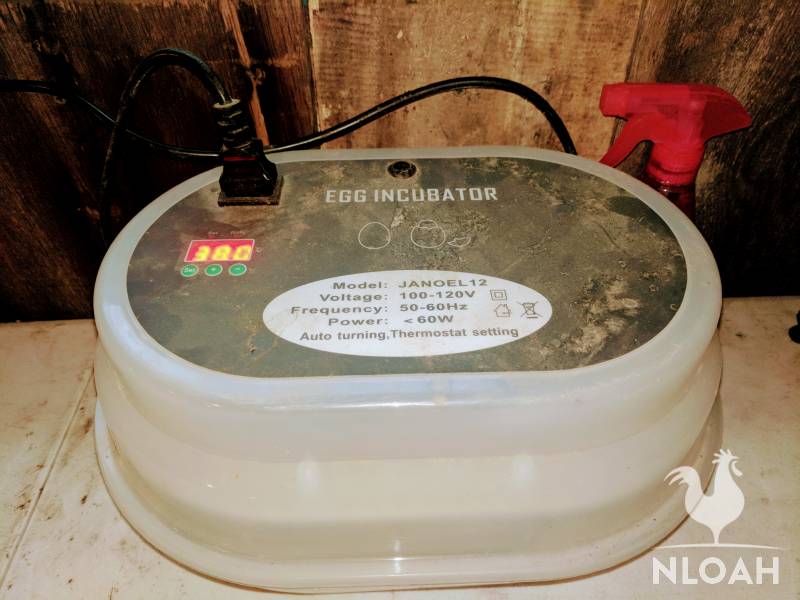
Going this route to hatch eggs will require manual turning three times per day. The live hatching ratio will likely be reduced because the duck eggs will not face pointy side up, but you should still be able to hatch some new ducklings to add to the flock.
Keeping drakes in addition to duck-laying hens will allow you to have a continual supply of ducklings to maintain or grow flock numbers – or to start a homesteading side hustle breeding duck egg-laying breeds to sell.
The average lifespan of a duck is eight to 10 years, but egg laying will slow down substantially at the four to five-year mark.
Ducklings and chickens can be kept in the same brooder without any problems, according to my personal experience.
Ducklings are a whole lot messier than chicks, so the bedding in the brooder must be changed every two to three days to avoid a rancid sour smell and to prevent the growth of harmful bacteria.
The Best Duck Egg Breeds
Khaki Campbell
Khaki Campbell hens are both incredible egg layers and superb sitters. While the Pekin duck breed might lay slightly larger and more rich eggs, they do not lay as many nor are they good sitters.
Laying hens of this breed can lay between 280 to 320 eggs each year. Their peak laying years (as with nearly all duck breeds) occur during the first two years of their lives. The eggs laid during this time will not usually be as large as the ones laid when they are five years old.
Egg laying usually begins (again as with most duck breeds) around the age of six months. The large white eggs a Khaki Campbell duck lays will weigh around two and half to three-quarters of an ounce.
Khaki Campbells are an independent duck breed that is known to be affable and intelligent. They are good foragers and bond tightly with the other ducks and even chickens that they are raised within the coop.
But, it will likely take a little longer to train them to a turn out and put up a routine than Pekin ducks, which adapt to learning instruction extremely quickly, in my personal experience.
This duck egg-laying breed is medium-sized and weighs around four to four and a half pounds once mature. If you also want to keep ducks for meat, these birds will not get as large as some other solid egg-laying breeds – but do produce a tender and moist type of meat.
Out of all the duck breeds we have kept over the years, Pekin ducks have remained our staple egg producers and my favorite. In my personal opinion, Pekin ducks are the most hardy and intelligent breed.
They also have proven themselves to have the most “barnyard sense” when it comes to assessing possible threats by predators and responding to the loud and shrill danger calls sent out by our guineas.
I have watched two Khaki Campbells literally drain a large mud puddle of both bugs and water in barely more than five minutes.
If you have a problem with low-lying areas or mud puddles on your homestead, these duck egg layers might be the best choice.
While these ducks can be equally happy living inside of a large run or free-ranging, they are among the best foragers in the domestic duck world.
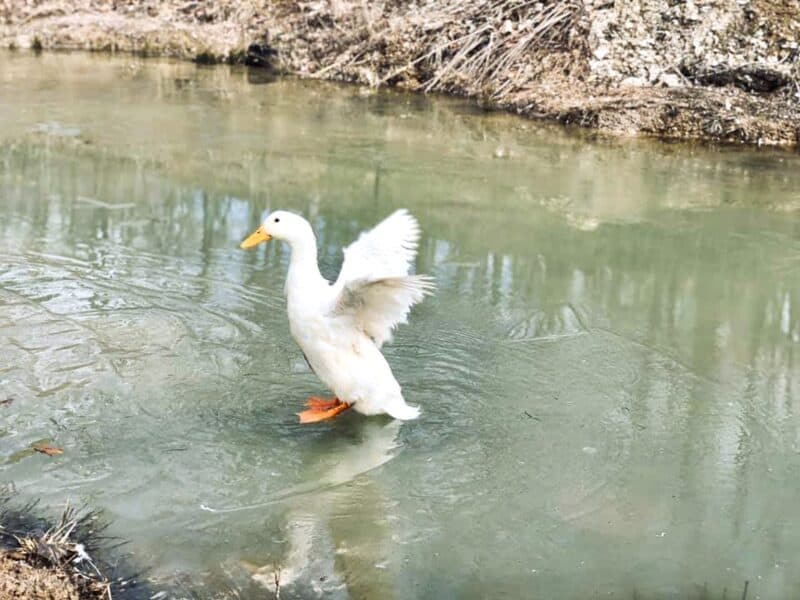
Pekins
These smart little beauties are my favorite duck breed. They are known as a top-quality dual-purpose breed because they are raised for egg laying as well as meat cultivation.
Pekin ducks have extremely friendly personalities, are amazing little foragers, and learn the free-ranging and put up routine in record time.
They are a very routine-driven duck breed. They want to be fed at the same time every day and at the same time, or else they will honk and quack relentlessly to garner the attention of their keepers.
When left to their own devices, Pekins should be expected to rid your yard of a vast array of bugs – or remove bugs from your garden when placed inside of a “chicken” tractor and allowed to roam between the rows.
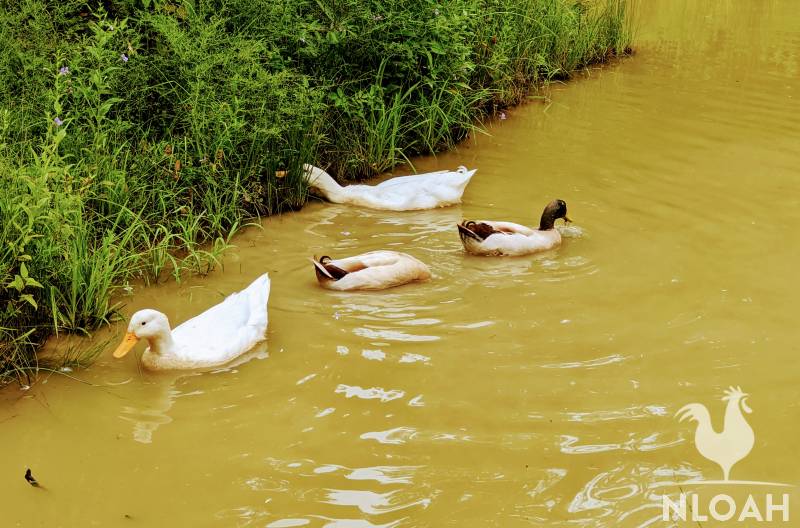
Pekin laying hens can be expected to lay roughly 200 to 300 per year during their peak laying years. Pekin duck eggs weigh around three ounces. Although Pekin duck hens are incredible layers, they tend to be notoriously lousy sitters. If you want to grow your flock of Pekin ducks, expect to incubate any eggs that are destined for hatching.
While it is not unusual to catch a Pekin hen or two sitting her eggs and any she can steal from another nest, her interest in this activity usually only lasts for a few days – or even a few hours before swimming in the pond beckons or the boredom of sitting becomes overwhelming.
Pekin ducks weigh about eight to 11 pounds – or more, once mature.

Indian Runners
The cylindrical body shape of Indian Runner ducks makes them very easy to recognize. These consummate layers stand in an almost upright position because of how far back the legs are placed on their bodies.
Like many (but not all) top duck egg-laying hens, their body is too heavy for their small wings to function well enough to allow them to fly. Indian Runner ducks weigh about four to four and a half pounds once they reach maturity.
They are easy to handle birds and are usually calm, fairly quiet, and docile in nature. Hens lay large eggs that are a green shade instead of the more common white eggs. Indian Runner hens lay 270 to 300 eggs per year on average. The eggs weigh around two and a half to three ounces.
The hens start laying a little earlier than most duck breeds. You should expect to start seeing eggs when the Indian Runner hens are about four and a half months old. While the Indian Runner hens are steady and dependable layers, they are not good sitters, on average. They are also excellent free rangers.
Indian Runners can adapt to coop and run life without any issues as long as the run area is large so they have ample room to roam and water to swim in.
Silver Appleyards
Silver Appleyard laying hens are exceptionally winter hard and tend to lay more eggs than some other breeds during the cold weather months. This heritage duck egg-laying breed weighs in around eight to 10 pounds once mature, making them a good choice to a dual-purpose meat bird, as well.
Members of this duck breed are also accomplished foragers and have an affable personality with their coop maters and human keepers. They are typically a quieter breed than Pekin ducks and sit their eggs better than this common and popular breed – but do not sit nearly as well as Khaki Campbell hens.
Khaki Campbell hens generally weigh between 250 to 270 eggs annually. The eggs weigh between two to three ounces, on average. Silver Appleyards usually start laying between five to seven months of age.
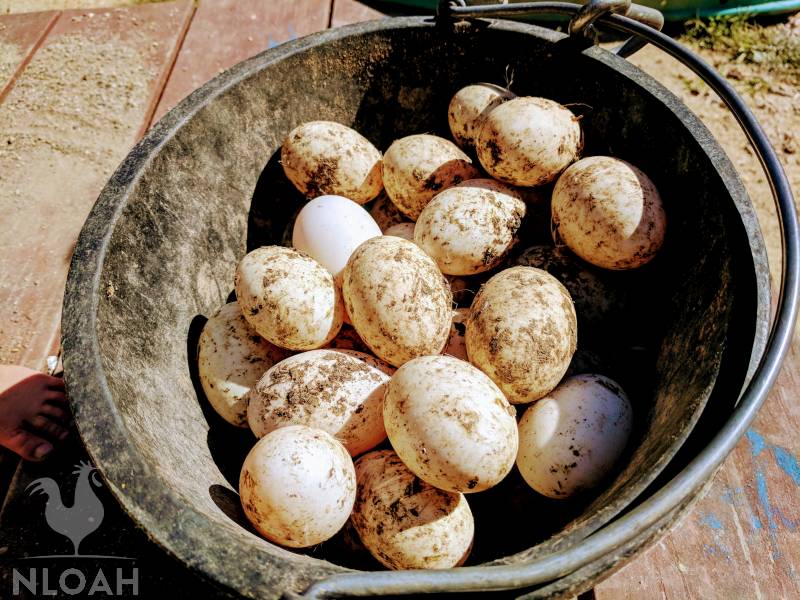
Resist the urge to wash the duck eggs and put them directly into the refrigerator. Cleaning the eggs will remove the natural protective covering the laying hen encases around the egg – which helps prevent air and bacteria from getting inside of the egg.
When stored in a space with roughly a 45 F degree (7 Celsius) temperature, they will last from about two weeks to a month. Placing unwashed eggs in the refrigerator typically increases their shelf life to three months. Unwashed eggs will last at least two weeks unrefrigerated and three months or more in the refrigerator.
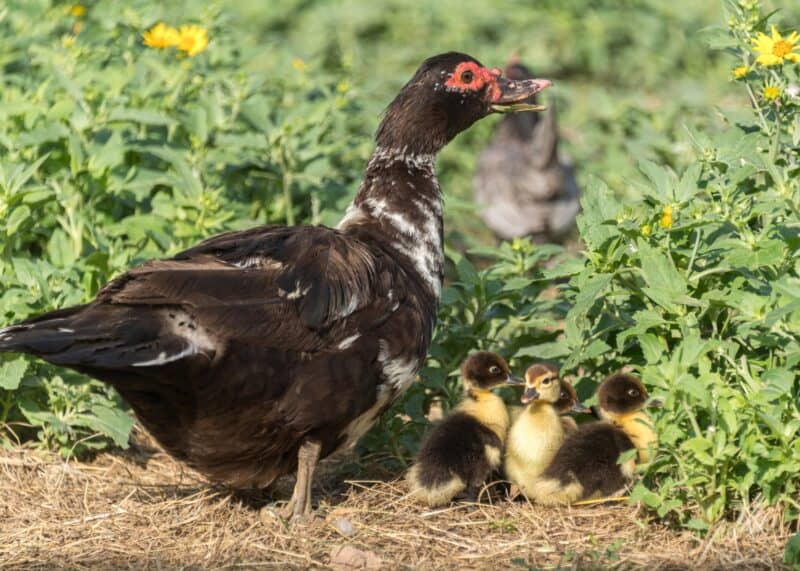
Muscovy
This duck breed is probably the quietest you can buy – which may be a prime consideration for small-town and suburban backyard keepers. In fact, Muscovy ducks do not actually quack or honk like other breeds but make a light hissing sound.
Muscovy hens lay about 180 eggs per year. While they lay fewer eggs than some breeds on this list, their eggs are often regarded for their hardiness and rich flavor. The hens are excellent sitters and tend to have loving and sustained maternal instincts once the ducklings are born.
They are very quiet, low-maintenance birds who will get along well with other fowl that you may have. A pond is not strictly necessary as they’re perfectly happy with a paddling pool so you can keep them even without a lake or pond on your property.
Fun fact: In Spanish, the Domestic Muscovy duck is called either pato mudo – which means mute duck or pato casero – which translates to backyard duck.
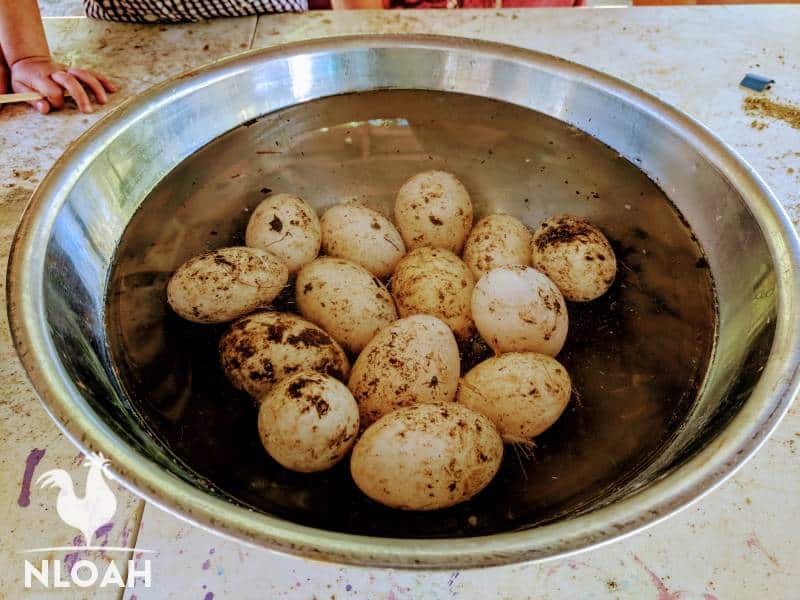
To test the level of freshness of the duck eggs (or any egg, for that matter) place them into a bowl of lukewarm water. Eggs that sink to the bottom are fresh. Ones that float to the top need pitched. Eggs that do not sink all the way to the bottom but are not floating above the water’s surface are likely still safe to eat but need to be used quickly.
Abacot Rangers
These duck-laying hens produce between 180 to 200 eggs per year. They produce really large eggs that weigh between four and a half to five and a half ounces.
Abacot Rangers are a dual-purpose duck breed even though they are fairly lightweight in size. They somewhat resemble Khaki Campbell ducks but are slightly larger.
This duck egg-laying breed is known for its docile nature, hardiness, and longevity. Abacot Rangers often live past the average 10-year mark.
Aylesbury
This duck egg-laying breed is incredibly popular in Europe – but more for its flavorful meat than the eggs it produces. The Aylesbury ducks are efficient foragers as well as hardy and docile keepers. Members of this duck breed look a lot like incredibly large Pekin ducks.
Aylesbury duck hens lay only 35 to 125 eggs per year, but they lay steadily throughout the winter months. The large eggs can be either white or a tinted green shade. These ducks are a heritage breed and are on the endangered breeds list.
Alabios
The Alabio duck hens lay between 200 to 250 eggs that weigh between nearly three and a half to four and a half ounces each. They are amazing foragers but will fly away if their wings are not clipped or they are kept exclusively inside of a coop and run.
Alabio ducks are a very heat-tolerant breed and hail from Indonesia, where they are among the most popular breeds kept on farms. Laying hens often go broody, making them excellent sitters.
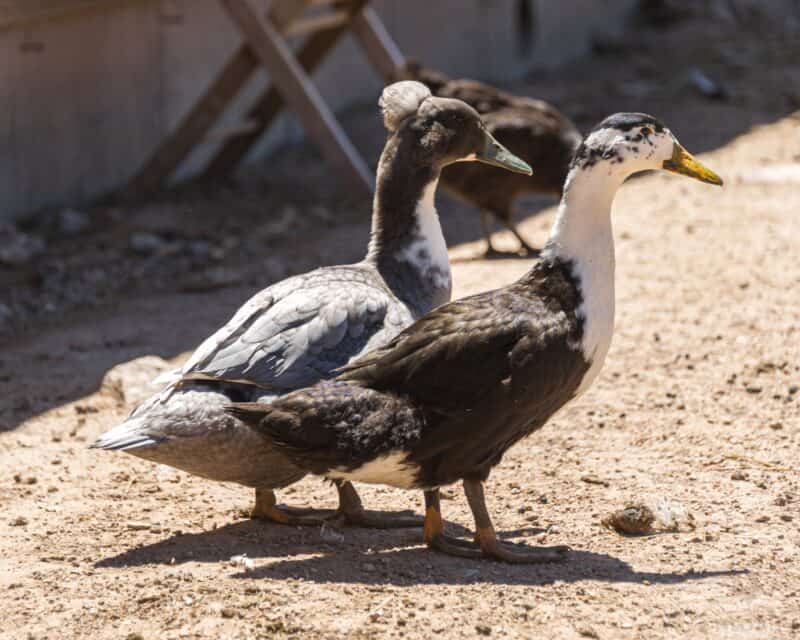
Magpies
Laying hens from this duck breed commonly produce between 220 to 290 large white eggs each year. Magpie ducks are highly regarded for their docile and hardy nature.
Due to their large size, Magpies are also often kept as dual-purpose or meat birds. Foraging is one of a Magpie duck’s favorite pastimes.
While they can do fine in a coop and run environment, the habitat will need to be spacious to avoid boredom that may cause feather plucking.
Magpie ducks are a light breed, allowing them to have some flying ability, which you will readily notice if a member of the flock becomes startled or scared. They are better layers than sitters on average but do produce a small but steady stream of eggs during the winter months.
Saxony Ducks
Saxony Ducks are definitely one of the best duck breeds for egg production. Not only are they exceptional egg layers, producing around 100 to 200 eggs per year, but they’re also quite beautiful to look at. They have beautiful feathers in shades of grey and white, making them very attractive birds.
They’re not terribly aggressive, making them great pets for families with children. Saxony Ducks thrive in cold climates, so they’re perfect for people living in areas with long and freezing winters.
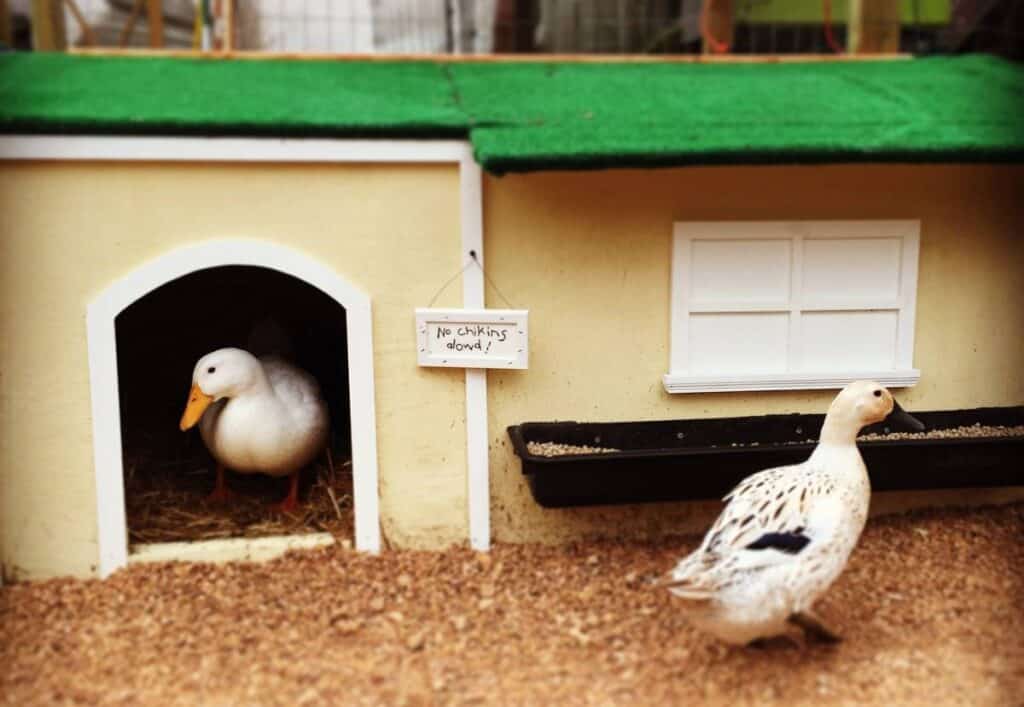
Welsh Harlequin
This heritage duck breed is prone to producing in excess of 300 large white eggs annually. They are often regarded as a dual-purpose breed due to their large size. In addition to being superb layers, Welsh Harlequin hens are also known for their steadfast sitting abilities.
This duck breed was created by selectively breeding some Khaki Campbell ducks that were born with unusually light color mutation.
Thanks to their Khaki Campbell heritage, they are prone to being not only a dependable laying and sitting breed, but hardy in most climates, as well.
Ancona Duck
Ancona Ducks are an energetic breed, and they love spending their time outdoors. They’re also fantastic layers, producing around 210 eggs each year. Ancona Ducks have black and white feathers, giving them a unique look that you’re sure to love.
They are known for their ability to adjust to various living conditions and lay eggs in all seasons, making them an excellent choice of duck for those living in areas with varying temperatures.
Cayuga Duck
Cayuga ducks not only produce around 100-150 eggs in a year, but they also have gorgeous black feathers with a greenish hue when they meet sunlight, making them stand out in any flock.
They are relatively quiet and friendly, making them perfect for people living in urban areas. Cayuga ducks may have lower egg production compared to other breeds, but they make up for it with their docile and peaceful personality, making them ideal pets for families.
Blue Swedish Duck
The Blue Swedish duck breed is a beautiful bird that is kept for both eggs and meat. It will forage decently but does not mind being kept in a spacious coop and run.
Laying hens of this breed lay only between 100 to 150 creamy eggs per year, but each one can weigh as much as seven and a half to nine ounces. They have little to no flying ability. Blue Swedish laying hens are good sitters and overall good little feathered mommas.
Rouen
Rouen ducks look a lot like Mallard ducks, except they can actually grow larger than the wild breed as they mature. Expect members of this duck breed to take a few weeks up to two months longer to reach maturity than most other breeds. Rouen laying hens produce between 140 to 180 medium-sized eggs annually.
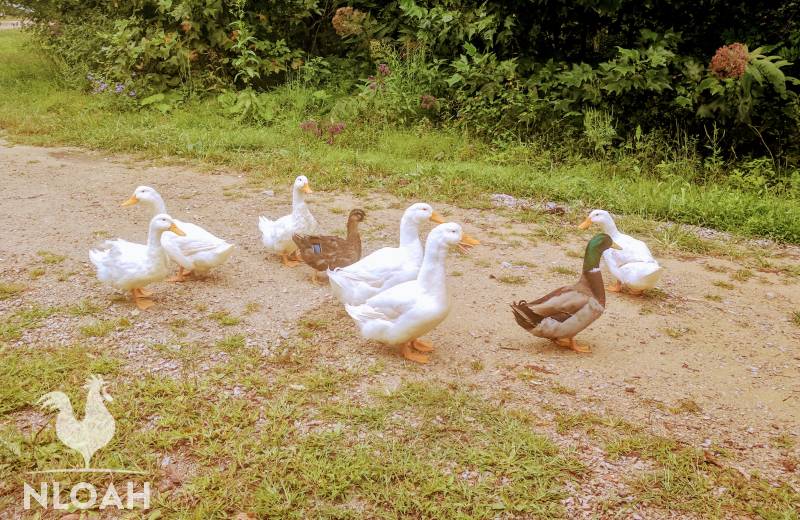
This duck breed is considered dual purpose because they are equally prized for their meat, as well as their eggs. This is at least an average free-ranging breed but in my personal experience can be a little skittish and take a while to learn the turn out and put up routine.
Orpingtons
Orpington ducks (often called Buff Orpington just like the chicken breed) can usually lay between 200 to 250 large white eggs on an annual basis. They are heavy birds and are also often kept for meat harvesting purposes, as well.
Buff Orpingtons
Members of this duck breed are better than average foragers and often very friendly with their keepers. They are equally good at free-ranging and coop life.
Birds included in this breed are also big foragers and love free ranging. I have not personally found Rouen ducks to be as intelligent or easy to train as Pekins, they still are able to learn a barnyard routine fairly quickly and do not wreak havoc at put-up time.
There is nothing more frustrating for a homesteader or backyard keeper than having to chase one or two ducks around a coop as night starts to fall because the little feathered cutie refuses to go into the coop.
Rouen ducks are fairly quiet (more so than Pekins) and they will not take to coming and sitting in your lap for a good scratching like some chickens, they are not skittish and have a pleasant demeanor.
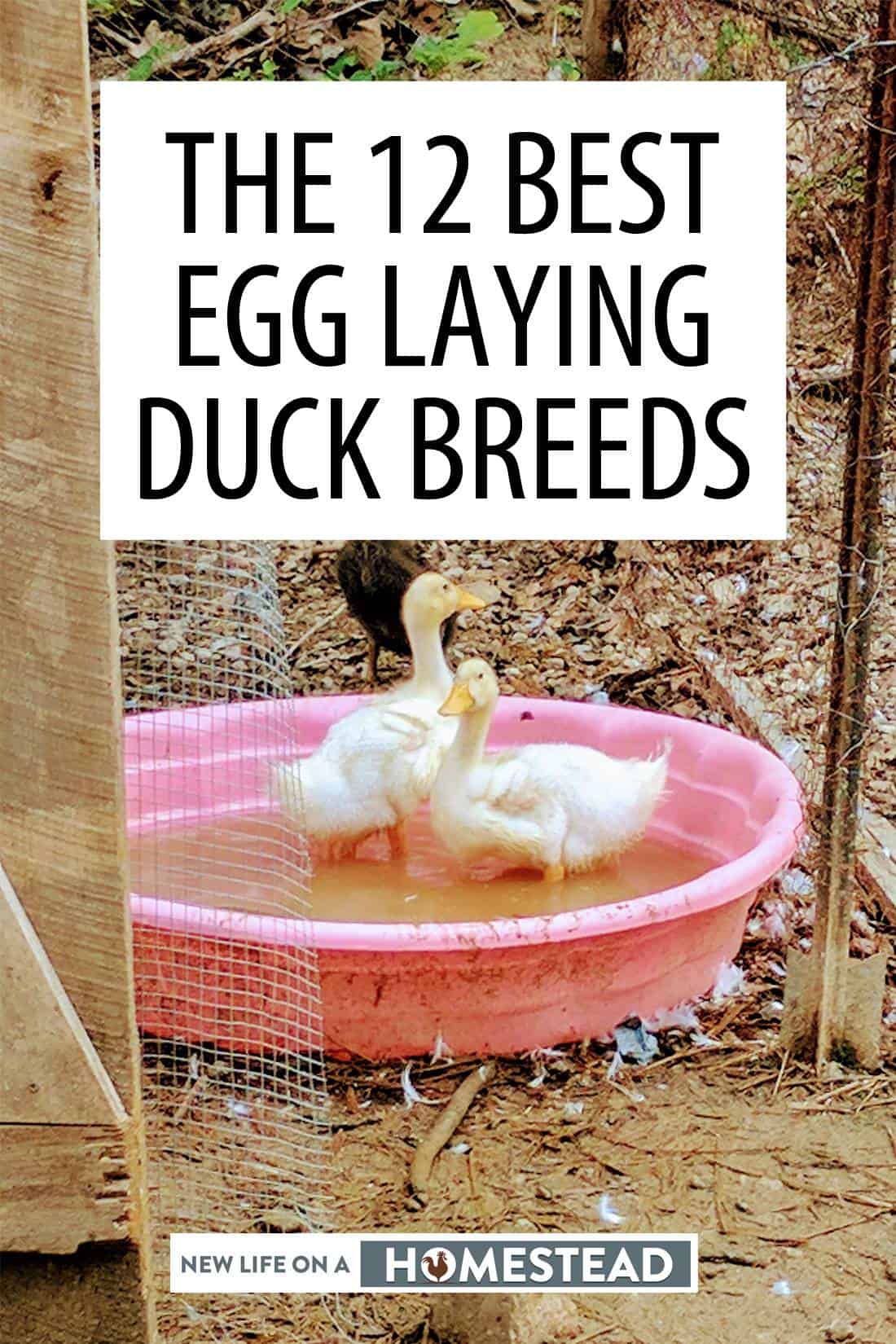

Tara lives on a 56 acres farm in the Appalachian Mountains, where she faces homesteading and farming challenges every single day, raising chickens, goats, horses, and tons of vegetables. She’s an expert in all sorts of homesteading skills such as hide tanning, doll making, tree tapping, and many more.
